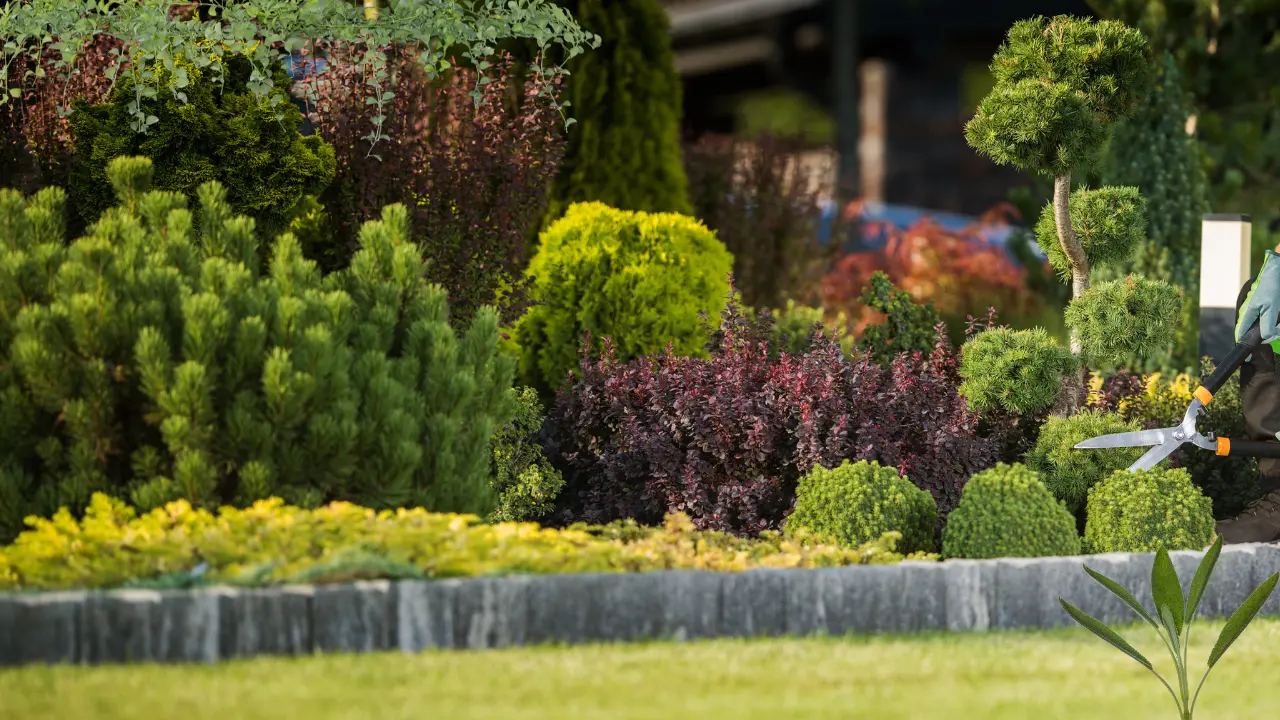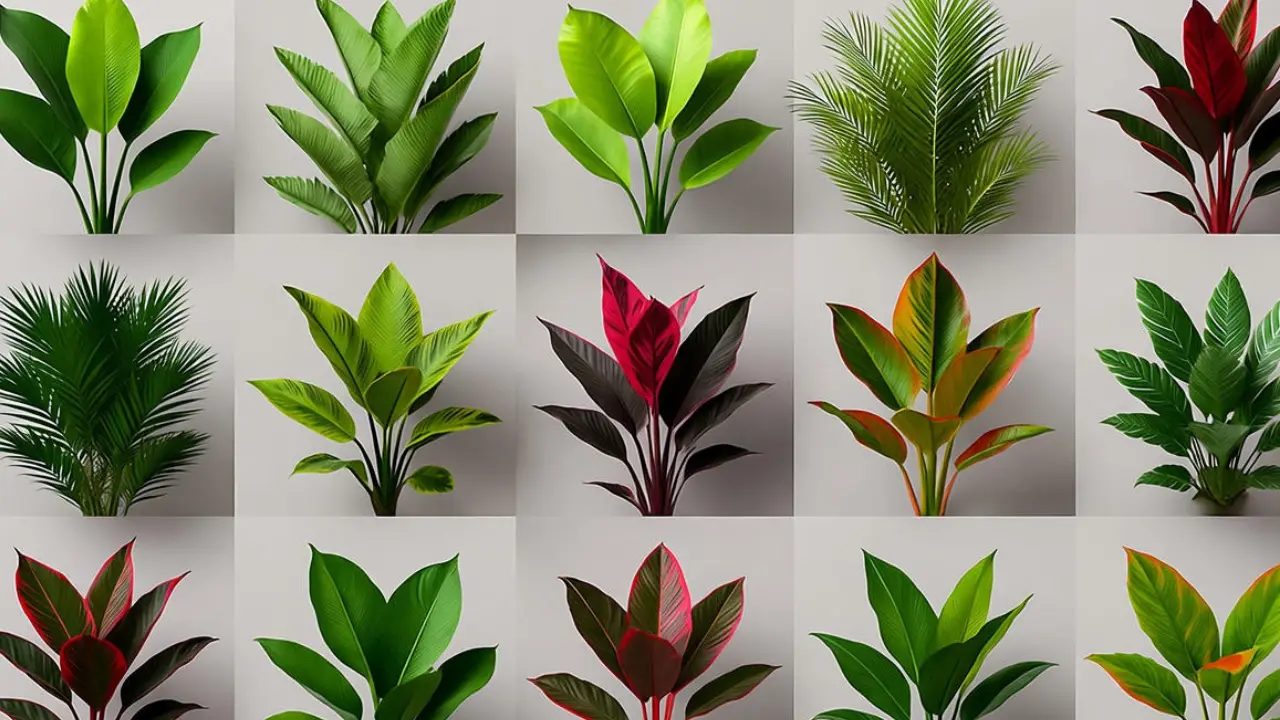Florida’s landscapes are a paradise of sun-soaked beaches, lush evergreens, and vibrant blooms, but they come with challenges. The state’s subtropical to tropical climate brings scorching summers with temperatures often exceeding 90°F, high humidity levels that can top 80%, relentless afternoon thunderstorms, and the occasional hurricane-force winds. Add in sandy, nutrient-poor soils, high salt exposure near coasts, and occasional droughts, and it’s clear why traditional gardening can feel like a full-time job. But in 2025, with growing emphasis on sustainable living and water conservation—especially amid rising concerns over climate change and water restrictions—low-maintenance plants are more popular than ever. These resilient beauties thrive with minimal intervention, requiring little watering, pruning, fertilizing, or pest control once established. They not only save you time and money but also support local ecosystems by attracting pollinators, providing bird habitats, and reducing the need for chemical inputs.
Choosing low-maintenance plants means opting for natives or well-adapted species that have evolved to handle Florida’s quirks. According to experts at the University of Florida’s Institute of Food and Agricultural Sciences (UF/IFAS), these plants cut water use by up to 50% compared to thirsty exotics, lower maintenance costs, and boost biodiversity. In this comprehensive guide, we’ll dive deep into the best options across categories, drawing from the latest recommendations for 2025. Whether you’re in the Panhandle’s cooler climes (USDA Zones 8-9) or South Florida’s steamy heat (Zones 10-11), there’s something here to transform your yard into a hassle-free haven. We’ll cover groundcovers for erosion control, shrubs for privacy, perennials for color pops, trees for shade, and more—complete with care tips tailored to Florida’s zones.

Why Go Low-Maintenance in Florida This Year?
2025 marks a pivotal year for Florida gardening, with trends leaning heavily toward native plants amid stricter water regulations and eco-conscious homeowners. Native species, which make up a big chunk of low-maintenance picks, require less irrigation because their root systems are tuned to local rainfall patterns—often just 1-2 inches per week after the first year. They’re also pest-resistant, slashing the need for sprays that harm beneficial insects like bees and butterflies, which are declining statewide. A study highlighted in recent UF/IFAS reports shows that native landscapes can support 3-4 times more wildlife than non-native ones.
Economically, it’s a win: Low-maintenance setups can reduce yard bills by 30-40%, per landscaping pros. Environmentally, they combat soil erosion in hurricane-prone areas and filter stormwater runoff. Plus, with plant availability booming—thanks to nurseries like those affiliated with the Florida Association of Native Nurseries—it’s easier than ever to source them. Start by assessing your site’s sun exposure (full sun: 6+ hours; partial shade: 4-6 hours; shade: less than 4), soil type (sandy vs. clay), and zone. Amend soil with organic matter if needed, but avoid over-fertilizing; a slow-release native blend once a year suffices. Mulch with pine bark or leaves to retain moisture and suppress weeds. Ready to plant? Let’s explore the stars of Florida’s low-maintenance scene.
Groundcovers: The Unsung Heroes of Erosion Control and Weed Suppression
Groundcovers are the backbone of any low-effort Florida garden, spreading to fill bare spots, stabilize slopes, and choke out weeds without constant mowing. In Florida’s sandy soils, they prevent nutrient leaching during heavy rains, a common issue post-hurricane. Aim for drought-tolerant varieties that handle salt spray if coastal.
Start with Asian Jasmine (Trachelospermum asiaticum), a glossy evergreen vine that forms a dense mat up to 12 inches tall. Its star-shaped white flowers bloom in spring, adding subtle fragrance. Thriving in full sun to shade, it tolerates poor, sandy soils and drought once established—perfect for Zones 8-10. Why low-maintenance? It grows vigorously (up to 3 feet per year) but needs trimming just once a year in late winter; no fertilizer required, and it’s deer-resistant. Plant 12-18 inches apart for quick coverage; water weekly for the first month, then let nature take over. In coastal Jacksonville, it’s a go-to for stabilizing dunes.
Another gem is Sunshine Mimosa (Mimosa strigillosa), a native perennial groundcover with fuzzy pink powderpuff flowers from spring to fall. Reaching 6-12 inches, it spreads via rhizomes, tolerating light foot traffic as a lawn alternative. Full sun and well-drained sandy soils suit it best in Zones 8-10; it’s highly drought-tolerant, surviving weeks without rain. Low-maintenance perks include no mowing (or just occasional), pest resistance, and pollinator appeal—bees love those blooms. For Central Florida yards, mix it with grasses for a meadow look; establish with bi-weekly watering, then forget it.
Don’t overlook Beach Dune Sunflower (Helianthus debilis), a spreading annual that acts like a perennial in Florida’s warmth, with bright yellow daisy-like flowers year-round. Growing 1-2 feet tall, it fills large areas quickly in full sun and dry, sandy soils (Zones 9-11). Drought and salt tolerance make it ideal for beachfronts; it self-seeds for perpetual coverage. Maintenance? Virtually none—cut back spent blooms if desired, but it’s tough against hurricanes. Benefits include erosion control and butterfly attraction; plant in fall for root establishment before summer heat.
For shadier spots, Coontie (Zamia pumila), Florida’s only native cycad, forms fern-like fronds up to 3 feet tall, resembling a low palm. It’s shade-loving, drought-hardy, and salt-tolerant in Zones 8-11, handling poor soils effortlessly. Low-maintenance because it grows slowly (no pruning needed) and resists pests; fertilize sparingly in spring. Its reddish cones add interest, and it’s a host for the rare Atala butterfly. Space 2-3 feet apart for groundcover effect.
Rounding out the list, Liriope (Liriope muscari) offers grass-like clumps with lavender spikes in summer, reaching 12-18 inches. Full sun to shade, moist to dry soils in Zones 7-10; drought-tolerant once rooted. Trim foliage annually for tidiness— that’s it. It’s salt-resistant, making it great for medians.
These groundcovers can transform a weedy slope into a lush carpet in under a year, saving hours on weeding.
Shrubs: Privacy Screens and Color Without the Fuss
Shrubs provide structure, privacy, and seasonal flair in Florida gardens, hedging against wind and noise while demanding little in return. Natives dominate here for their adaptability to alkaline sands and occasional floods.
Top pick: Firebush (Hamelia patens), a versatile evergreen shrub up to 10-15 feet, bursting with red-orange tubular flowers from spring to frost. Full sun to partial shade, any well-drained soil in Zones 8-11; it’s drought, heat, and salt-tolerant. Low-maintenance magic lies in its self-pruning habit and pest resistance—prune lightly in spring for shape, water bi-weekly initially. Attracts hummingbirds and butterflies; dwarf varieties like ‘Compacta’ fit smaller yards. In South Florida, it hedges beautifully without yellowing.
Beautyberry (Callicarpa americana) steals the show in fall with clusters of vibrant purple berries on arching stems up to 6 feet. Partial shade to full sun, moist to dry soils in Zones 7-10; tolerates poor conditions. Why easy? It reseeds mildly (pull extras), needs no fertilizer, and deer avoid it. Berries persist into winter for birds; prune to 12 inches in late winter for bushier growth. A 2025 trend for wildlife gardens.
Yaupon Holly (Ilex vomitoria), an evergreen sentinel up to 20 feet, sports small white flowers and red berries on females. Full sun to shade, sandy to clay soils in Zones 7-9; extremely drought and salt-hardy. Low-maintenance: Self-cleaning, no pruning unless hedging, caffeine-rich leaves for tea. Plant male/female pairs for berries; it’s hurricane-proof.
Wax Myrtle (Morella cerifera) grows 10-20 feet with aromatic, silvery leaves that deter bugs naturally. Full sun to shade, wet to dry soils in Zones 7-10; flood and salt-tolerant. Trim for density annually; otherwise, hands-off. Berries feed birds, fragrance repels mosquitoes—ideal for North Florida screens.
Saw Palmetto (Serenoa repens), a tough understory shrub to 10 feet, with fan-like fronds and white flowers. Full sun, sandy soils in Zones 8-11; ultra-drought and wind-resistant. No pruning needed; pollinators flock to blooms. Silver varieties add texture.
Walter’s Viburnum (Viburnum obovatum) reaches 12 feet with white spring clusters and black berries. Full sun to shade, average soils in Zones 7-10; suckers for natural spread. Prune post-bloom; wildlife magnet.
These shrubs create layered privacy with zero drama, thriving on benign neglect.
(Word count so far: ~1200)
Perennials and Annuals: Pops of Color for Pollinators
For effortless blooms, perennials return yearly, while annuals self-seed in Florida’s mild winters. Focus on drought-tough ones to avoid wilting in heat.
Coreopsis (Coreopsis floridana), Florida’s state wildflower, flaunts golden daisies spring to fall on 2-foot stems. Full sun, dry sandy soils in Zones 8-10; reseeds freely. Deadhead for more flowers; butterfly haven, no fertilizer.
Gaillardia (Gaillardia pulchella), blanket flower, offers red-yellow petals year-round on 1-2 foot plants. Full sun, poor soils in Zones 8-11; self-seeds, drought-proof. Cut back midsummer; heat-loving.
Pentas (Pentas lanceolata) clusters star-shaped reds, pinks in sun, Zones 9-11; moist soils but drought-ok. Trim spent blooms; butterfly jackpot.
Black-Eyed Susan (Rudbeckia hirta), a 2025 sunny spot favorite, yellow coneflowers to 3 feet. Full sun, average soils Zones 3-9; self-seeds, deer-resistant. Divide every 3 years.
Society Garlic (Tulbaghia violacea), fragrant lavender spikes on 2-foot mounds. Full sun, well-drained in Zones 7-10; edible leaves, pest-repellent.
Salvia misella, blue-flowered native, low-growing for borders. Full sun, dry soils Zones 8-10; continuous bloom, hummingbird draw.
These add vibrancy with minimal deadheading, supporting Florida’s declining pollinators.
Trees and Palms: Shade and Majesty on Autopilot
Trees anchor landscapes, providing cooling shade (vital in 90°F+ summers) without litter or disease woes.
Southern Magnolia (Magnolia grandiflora), iconic evergreen to 80 feet, with huge white fragrant flowers and glossy leaves. Full sun, acidic moist soils Zones 7-9; drought-tolerant once big. Slow-growing, no pruning; pods feed birds.
Live Oak (Quercus virginiana), majestic draping branches to 50 feet. Full sun, sandy soils Zones 7-10; salt and wind-hardy. Acorns for wildlife; hurricane survivor.
Sabal Palm (Sabal palmetto), state tree, self-cleaning fronds to 30 feet. Full sun, wet-dry soils Zones 8-11; no trimming needed. Fibrous trunk resists storms.
Cabbage Palm (Sabal palmetto var.), similar but slimmer; edible hearts.
Crepe Myrtle (Lagerstroemia indica), deciduous to 30 feet, summer crinkly blooms in pinks. Full sun, any soil Zones 7-9; prune in winter for shape.
These provide long-term structure with establishment watering only.
Ornamental Grasses: Texture and Movement
Grasses sway in breezes, needing just annual cuts.
Pink Muhly Grass (Muhlybergia capillaris), pink plumes in fall on 3-foot clumps. Full sun, dry soils Zones 6-10; prune February. Drought-salt tolerant, bird seed source.
Fakahatchee Grass (Tripsacum dactyloides), tall to 6 feet, flood-drought ok. Full sun, moist-dry Zones 8-11; no prune.
Switchgrass (Panicum virgatum), blue-green to 5 feet, fall color. Full sun, poor soils Zones 5-9; wildlife cover.
Easy elegance for accents.
Succulents and More: Extreme Toughies
Agave (Agave spp.), spiky rosettes to 3 feet, yellow flowers once. Full sun, rocky soils Zones 7-10; water monthly max. Architectural, deer-proof.
Yucca (Yucca aloifolia), sword leaves to 10 feet, white bells. Full sun, sandy Zones 7-11; drought extreme.
Lemongrass (Cymbopogon citratus), citrus-scented to 4 feet, edible. Full sun, moist Zones 9-11; cut back yearly.
Planting and Care Tips for Success
Plant in fall or spring to dodge heat; dig holes twice wide as roots, no deeper. Water deeply weekly first 3-6 months (per UF/IFAS: 6 months for small pots). Mulch 2-3 inches, avoiding trunks. Fertilize natives sparingly—March with low-N. Prune post-bloom; scout pests early. For hurricanes, stake young plants. Zones matter: Panhandle cooler, Keys hotter. Consult local extensions for soil tests.
Conclusion: Bloom Effortlessly in the Sunshine State
Embracing these low-maintenance plants turns Florida gardening into joy, not chore. From Firebush’s fiery display to Muhly’s ethereal plumes, your yard can be beautiful, beneficial, and breezy. Start small—a few groundcovers or a shrub—and watch it flourish. For 2025, go native: Your wallet, wildlife, and watering bill will thank you. Happy planting!

